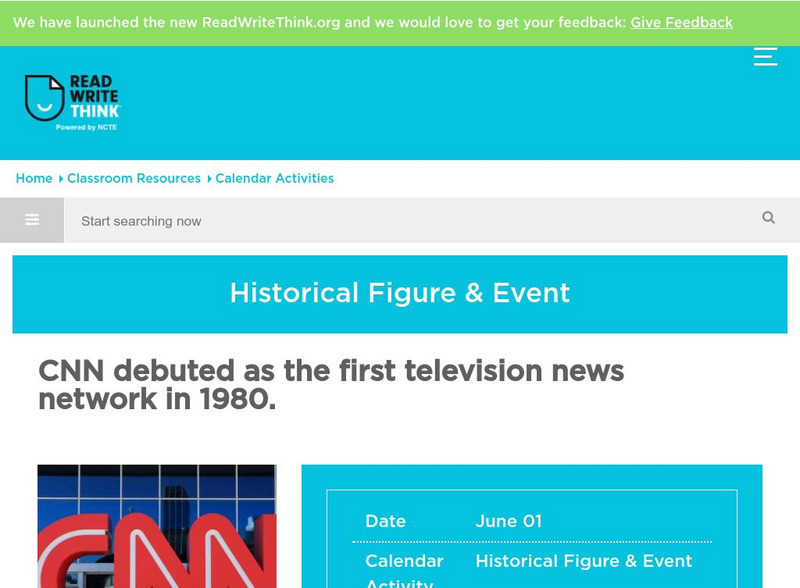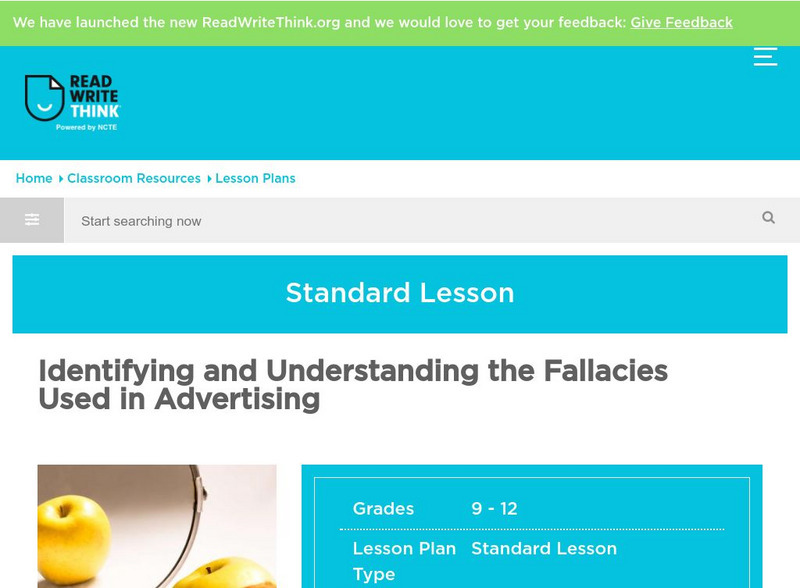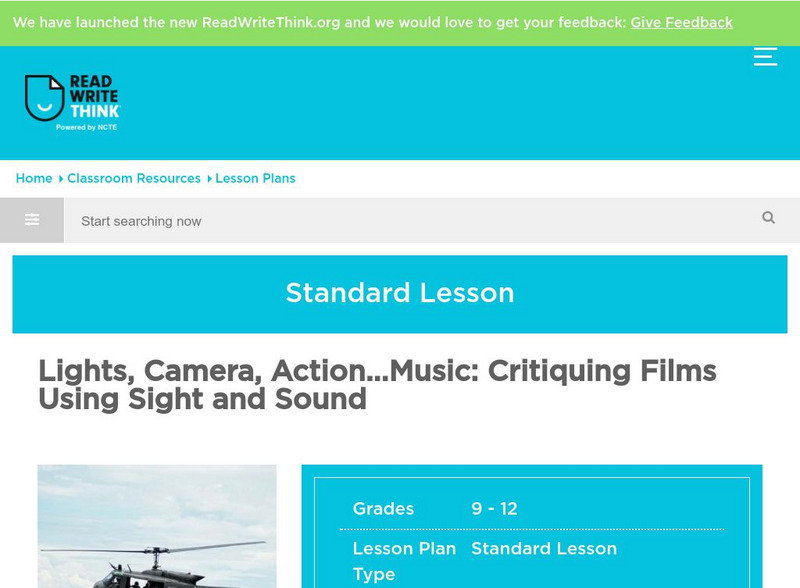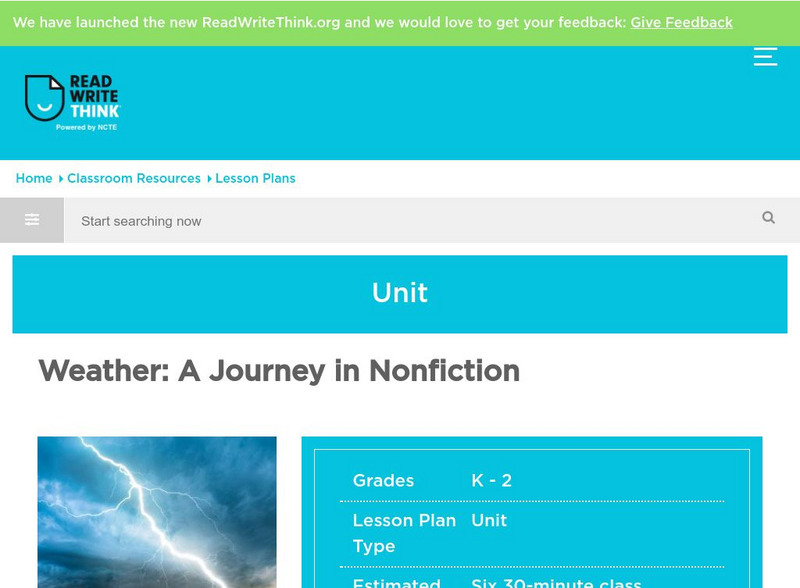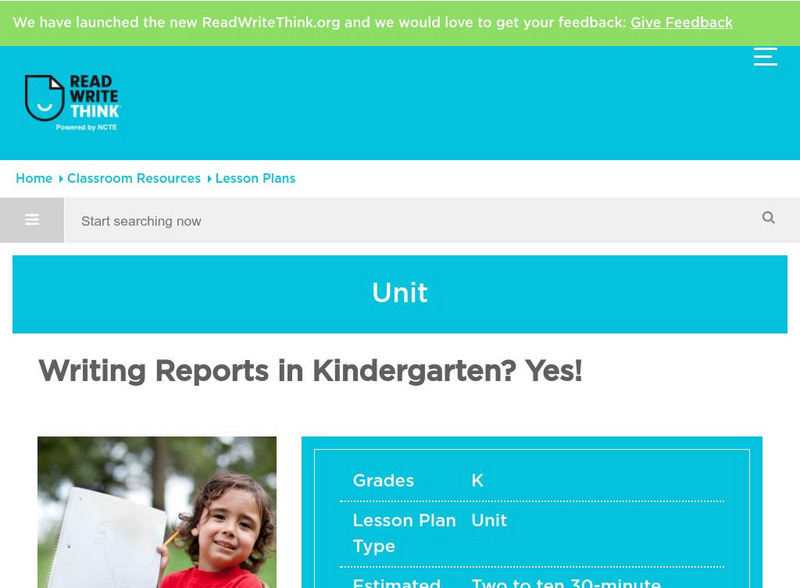ReadWriteThink
Read Write Think: Cnn Debuted as the First Television News Network in 1980
These lesson plans relate to the gathering and production of news and creating a visual timeline. There are links to other lesson plan ideas, as well as web links, and a brief bibliography. SL.11-12.2 Eval&Integrate sources
ReadWriteThink
Read Write Think: Identifying and Understanding the Fallacies Used in Advertising
Students examine the fallacies that surround them every day, deconstruct fallacious images and messages in advertisements, and demonstrate their understanding of the fallacies through multimedia presentations.
ReadWriteThink
Read Write Think: Critiquing Films Using Sight and Sound
This lesson plan examines methods of critiquing and review films based on elements of sight and sound. Included in the lesson plan is an overview, practice, objectives, resources, preparation, and more.
ReadWriteThink
Read Write Think: Designing Effective Poster Presentations
Contains plans for six or seven lessons that teach students to create and present effective poster presentations. In addition to objectives and standards, this instructional plan contains links to PDF handouts and sites used in the...
ReadWriteThink
Read Write Think: Comic Makeovers: Examining Race,class,ethnicity,and Genderin Media
Students explore stereotypes in the media and representations of race, class, ethnicity, and gender by analyzing comics over a two-week period and then re-envisioning them with a "comic character makeover."
ReadWriteThink
Read Write Think: Searching Informational Texts
Online lesson allows elementary learners to use prior knowledge, make predictions, and perform research on the Internet. Labeled "The Frog Beyond the Fairy Tale Character," lesson challenges students to examine print and online texts...
ReadWriteThink
Read Write Think: Acquiring New Vocabulary
This instructional activity teaches elementary students new vocabulary terms through book discussion groups. Students use context clues, prior knowledge, and print and online resources for vocabulary understanding in their discussion.
ReadWriteThink
Read Write Think: Writing Good Endings
This lesson plan explores endings and conclusions to children's literature in an attempt to teach how to successfully write a good ending. Included in the lesson plan are an overview, practice, objectives, resources, preparation, and more.
ReadWriteThink
Read Write Think: Reading Informational Texts Using the 3 2 1 Strategy
Students can count on using the 3-2-1 strategy to help them successfully comprehend and write about an informational text.
ReadWriteThink
Read Write Think: Reading Word Family Words
The focus of the instruction of identification strategies in this lesson plan is the book "Click, Clack, Moo: Cows That Type." Included in the lesson plan is an overview, practice, objectives, resources, preparation, and more.
ReadWriteThink
Read Write Think: Text Talk (Read Aloud)
This online lesson supports the language development and reading comprehension of kindergarten through second graders. Through the use of an innovative "Text talk," strategy, students will explain, develop, and expand upon story ideas....
ReadWriteThink
Read Write Think: Digging Up Details on Worms: Using Science in an Inquiry Study
A lesson plan based on a study unit of earthworms, using the inquiry model to integrate scientific processes with literacy practices. Instruction plans, related resources, and standards are included.
ReadWriteThink
Read Write Think: Weather: A Journey in Nonfiction
Questions about weather clear up when students use what they learned from their books to create a presentation to share with the rest of the class.
ReadWriteThink
Read Write Think: Writing Reports in Kindergarten
Lesson which provides three types of reports for early elementary young scholars to share. These allow young students to see themselves as writers with something useful to contribute from an early age.
ReadWriteThink
Read Write Think: Using Curiosity for Descriptive Writing
Lesson plan which allows kindergartners to combine their experiences and curiosity into developing beginning descriptions. Students use memories and illustrations in writing.
ReadWriteThink
Read Write Think: Defining and Exploring an Author's Stylistic Choices
Contains plans for two lessons that teach students how to recognize an author's use of style in literature. These plans use "Their Eyes Were Watching God" by Zora Neale Hurston as an example, but the basic ideas can be adapted to other...
ReadWriteThink
Read Write Think: Teaching Audience in Interactive Writing
Lesson which teaches elementary students the importance and significance of keeping the audience in mind when writing. Students write invitation letters and perform extension activities while learning these concepts. Good resource.
ReadWriteThink
Read Write Think: Collaborative Revising
Lesson in which students engage in an entire-group revising process, using a story which has already been written by the group. An excellent follow-up lesson to the "prewriting and drafting" lesson.
ReadWriteThink
Read Write Think: Using Comprehension Strategies With Elie Wiesel's Night
Working in small groups, young scholars read and discuss Elie Wiesel's memoir Night and then take turns assuming the "teacher" role, as the class works with four different comprehension strategies.RI.11-12.4 Word meaning, RI.11-12.10b...
ReadWriteThink
Read Write Think: Creating Question and Answer Books Through Guided Research
Contains plans for five lessons that develop research skills in primary students by having them create their own question and answer books. In addition to objectives and standards, this instructional plan contains links to sites used in...
ReadWriteThink
Read Write Think: Reading/writing About Whales Using Fiction and Nonfiction Texts
Students will have a whale of a good time in this lesson in which they use fiction and nonfiction texts to write a letter to an online scientist.
ReadWriteThink
Read Write Think: Exploring Satire With the Simpsons
Contains plans for three lessons that use the popular television show "The Simpsons" to teach about satire and satirical techniques. In addition to objectives and standards, this instructional plan contains links to PDF handouts and...
ReadWriteThink
Read Write Think: Exploring Satire With Shrek
The movie Shrek introduces the satirical techniques of exaggeration, incongruity, reversal, and parody. Students brainstorm fairy tale characteristics, identify satirical techniques, then create their own satirical versions of fairy tales.
ReadWriteThink
Read Write Think: Poetry: Varying Views of America
Lesson allows students to examine the various views of American perspective through studying three poems by diverse poets: "I Hear America Singing" by Walt Whitman, "I, Too, Sing America" by Langston Hughes, and "On the Pulse of Morning"...


